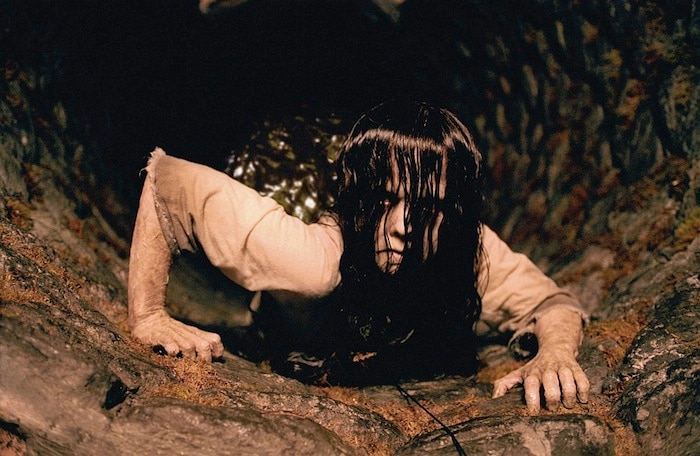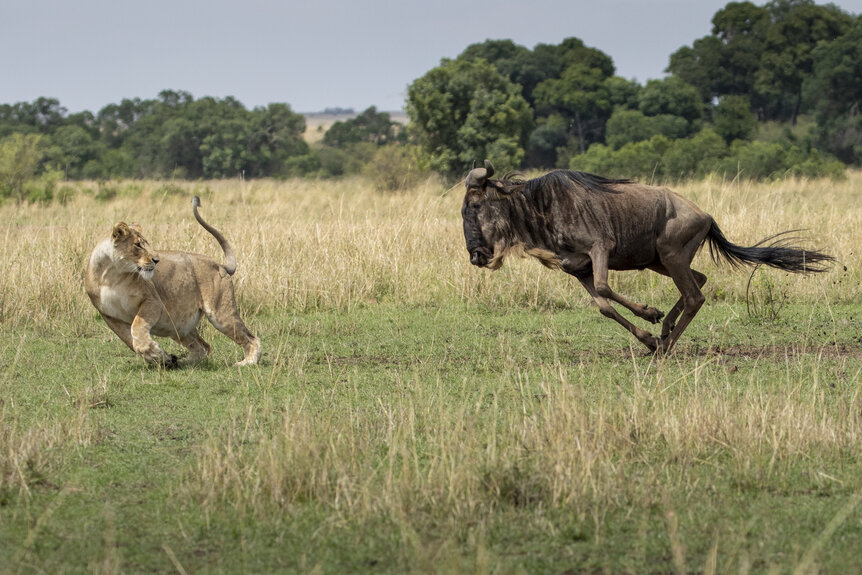Create a free profile to get unlimited access to exclusive videos, sweepstakes, and more!
Can you really be scared to death? The science behind 'The Ring'
What's worse, the monster or the fear?

Just after the turn of the millennium, something unusual happened in the world of horror. Hollywood seemingly became aware of spooky cinema coming out of Japan and saw dollar signs. Over the course of a decade, nearly a dozen movies were lifted from Japanese theaters and remade in English. Movies like Shutter and The Grudge made millions at the box office but the breakout movie, and the one which started the trend, was The Ring.
For many, it is still a seminal entry in the modern horror experience, still topping lists of the best horror movies ever made. When The Ring hit theaters in 2002, DVDs were just starting to outpace cassette tapes as the dominant form of visual home media, but VHS was still common. Because tapes were so easily rewritable, it wasn’t unusual to have stacks of home movies, some of which were unlabeled or recorded over, floating in boxes or on shelves in your home. Oftentimes, there was no telling what you had unless you stuck it in the VCR. That uncertainty helped propel The Ring to box office success.
As the movie opens, a group of teens is discussing an urban legend about a cursed videotape. The legend goes that watching it begins a seven-day countdown clock leading to your imminent demise. Later that night, one of the teens dies of mysterious circumstances, their face and body twisted in terror.
SCARED TO DEATH
The way in which Samara — the tortured and tragic monster of the movie — kills people isn’t precisely clear from the story. By the time the credits roll, we understand what the tape is and how to prevent its ill effects. In the process, we discover Samara’s motives but not her tactics. Despite the lack of total clarity, the movie and its sequel imply that Samara takes her victims through fear itself. It’s a fitting end, if we stop to think about it. Viewing the tape initiates a series of events, all of which are fed by fear.
The tape itself with its disturbing imagery coupled with the immediate phone call announcing the date of your death is enough to start the blood pumping in even the most skeptical viewer. Then things get worse. Pieces of the tape start to recreate themselves in your life until you’re experiencing small but increasing terrors as the grains of sand in your life’s hourglass fall away. By the time the countdown is over, when Samara crawls through your television screen and steals your life away, your nerves are fried. The fear is too much, and your body succumbs to inexplicable terror.
This experience is itself a kind of urban legend. We’ve all probably heard stories of people who were overwhelmed by fear and died rather than endure it for another moment. It feels almost silly to consider. Fear, for the most part, is beneficial even while it isn’t always enjoyable. Through fear, we learn about the dangers of the world and how to avoid them. Fear keeps you alive. Like many things, however, the difference between frightening medicine and fatal poison might be in the dose.
In the wild, animals experience fear as a matter of course. Surviving long enough to pass on your genes means evading countless dangers and our bodies have evolved to make us better at doing just that. If you’re a mouse and you encounter a cat, the brain will flood your system with adrenaline, ramp up blood flow to the muscles, and slow digestion. The processes involved in long-term survival are tempered in favor of putting all of your energy into surviving the fight happening right now. It’s the biological equivalent of the Enterprise crew redirecting power from the engines to the shields. It might leave you stranded when the fight is over, but that doesn’t matter much if your ship — or your body — is destroyed.
In humans, however, this physical fight-or-flight response can hurt more than it helps. During this rapid biological change over from normal function to red alert, your heart, liver, kidneys, and pancreas can take damage which is sometimes sufficient to end your life. The call is coming from inside the house.
This is well illustrated by a case that occurred in 2009. On the day in question, a man attempted and failed to rob a bank. While attempting to evade capture, the man hid out in the home of a 79-year-old woman. While the assailant didn’t harm the woman physically, she died anyway, apparently of cardiac arrest triggered by fear.
While damage to the liver, kidneys, or pancreas could cause trouble down the line, they won’t fail so quickly as to cause instant death. It’s believed that nearly all cases of death by fear are the result of damage to the heart.
As adrenaline floods your system, it comes into contact with receptors in the cardiac cells. Those receptors open up channels for calcium ions. As calcium floods into the heart, the muscles contract. If there’s too much adrenaline for too long, the heart just keeps contracting and can’t relax. The heart beats too fast, too irregularly, or not at all. Then it stops.
Fear is perhaps the most common emotion capable of initiating a catastrophic surge of adrenaline, but it isn’t the only one. Any particularly strong emotion could have a similar effect. Luckily, we don’t encounter such strong emotions often in modern life. And there are ways to prepare yourself for the eventuality.
There’s some evidence that preparing yourself mentally for a fright can mitigate some of the negative consequences. If you’re going to a haunted house, watching a horror movie, or riding a rollercoaster, you’re probably going to be okay. There’s also evidence that individuals with greater baseline heart health are somewhat protected from these events. So, if you’re planning on fleeing from a supernatural entity hell-bent on claiming your life through your television screen this Halloween season, you might want to spend a little extra time at the gym and lay off the peanut butter cups. It could save your life.
In the mood for something scary? Stream tons of great horror movies on Peacock.



























